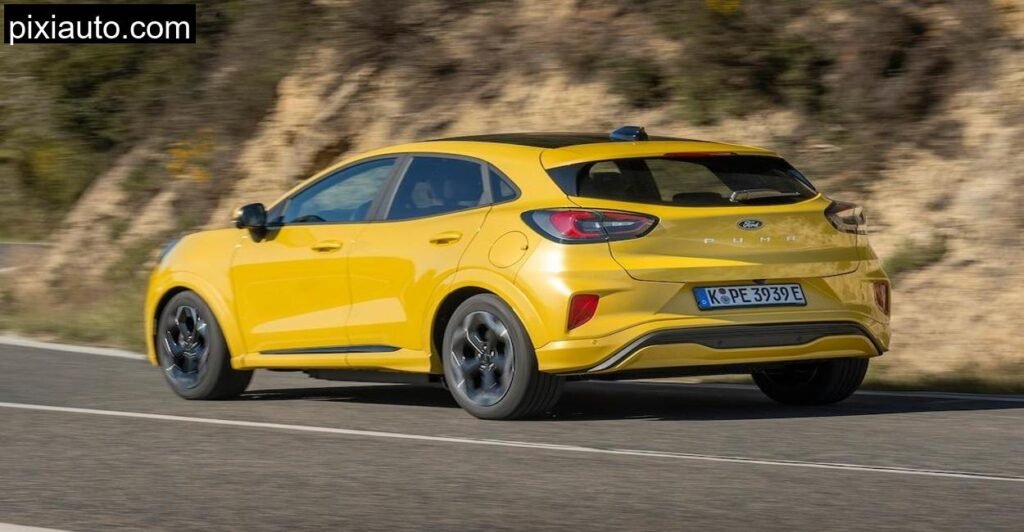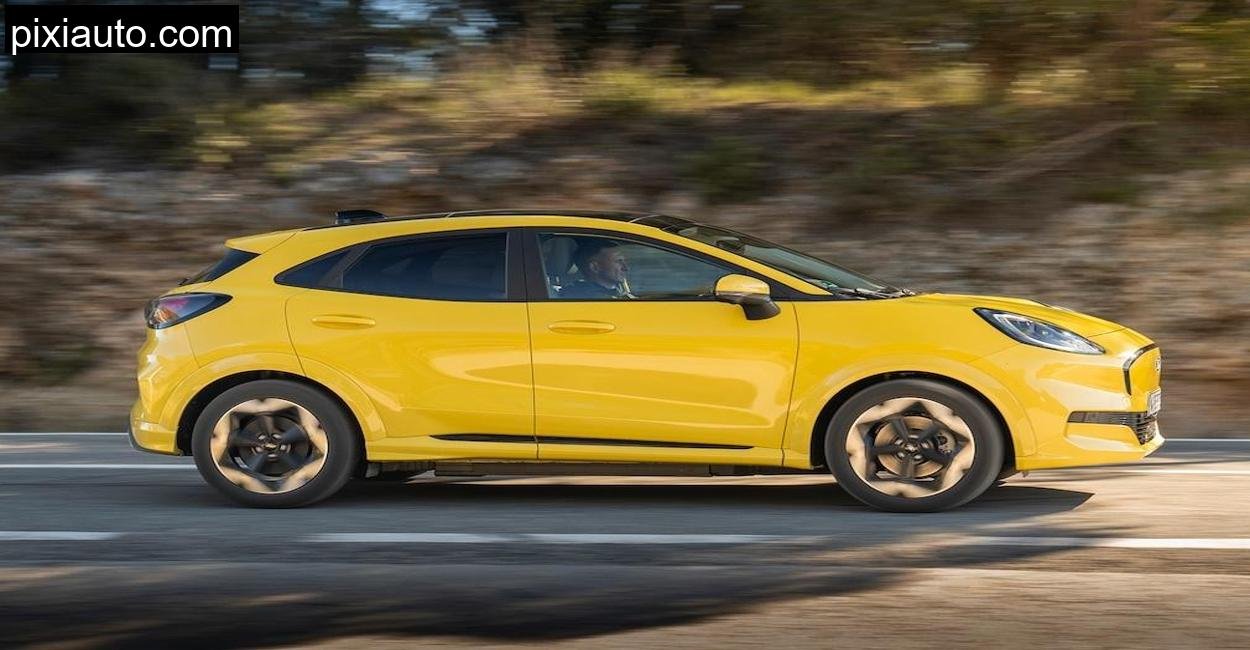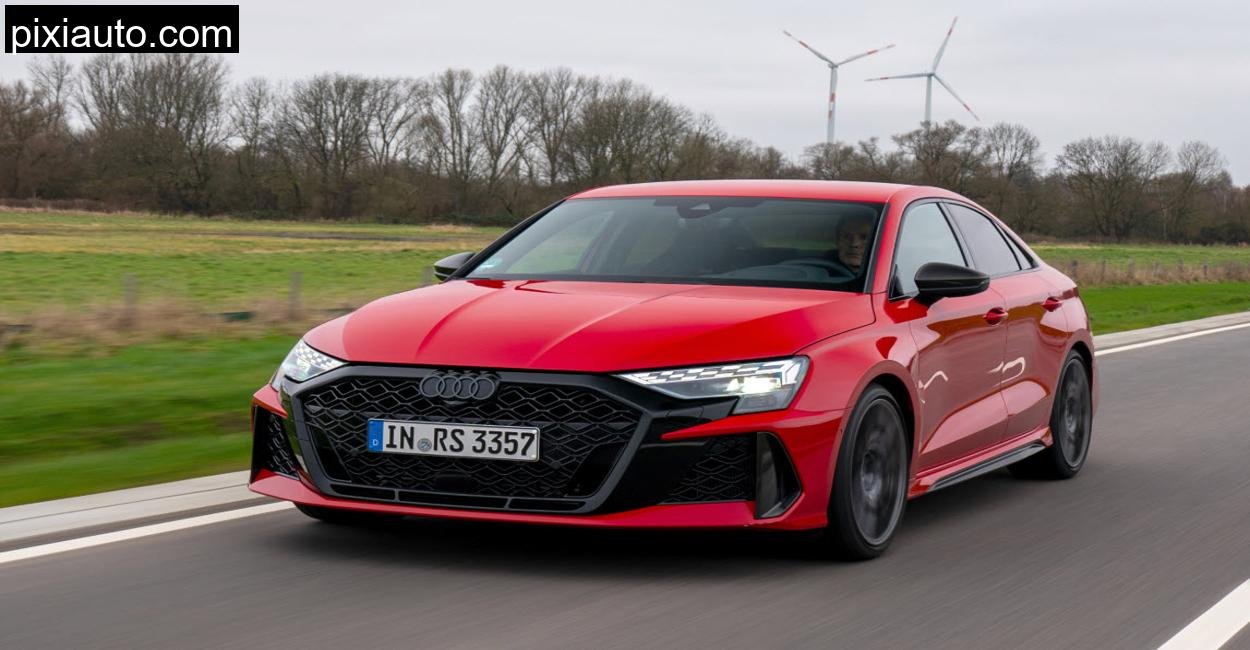There’s something deeply satisfying about seeing a brand finally find its stride. Ford has always been one of those legacy names that you expect more from, especially when the world pivots toward electric mobility. The Mustang Mach, E may have made the splash in the U.S., and yes, Ford dabbled with VW’s MEB platform for the Explorer and Capri, but those never felt quite… Ford. But now, the company has returned to its roots, designing, engineering, and building in Cologne, and it has chosen its best, selling crossover, the Puma, as the poster child of its electric emancipation. Enter the Ford Puma Gen, E, a compact crossover with clawed tires and a heart full of volts.
To test it, I picked the Deister, a rugged, forested mountain range southwest of Hannover. Its winding, hilly roads and unpredictable terrain were perfect to understand whether this electric Puma is all purr and no bite, or a real wildcat when you poke it. The scent of wet moss in the morning, the crunch of gravel beneath tires, and the way mist hugs the pines, it all set the stage for this electric newcomer to prove itself.
A Familiar Face with an Electric Pulse
You’d be forgiven for thinking the Gen, E looks too much like its combustion sibling. From afar, it does. The closed, off grille is the only giveaway at first glance, hinting at its battery, powered core. The proportions are still snappy, compact at 4.21 meters in length, with that unmistakable sporty nose and coupe, like stance. But it’s beneath the surface where things get radically different.
As I got in, the cabin greeted me with a distinct calmness that only an EV offers, no ignition rumble, just silence. The twin digital displays lit up with cool blue tones and crisp graphics that distinguish it from the petrol variant. The seats hugged tighter than expected, and that sensation of sitting slightly lower, thanks to the battery pack in the floor, gave it a sportier feel before even hitting the road.
There’s something magical about the first few kilometers in an electric car on forest roads. The absence of engine noise amplifies everything else, the rustle of leaves, the subtle hum of tires, the whistle of wind past the mirrors. But what surprised me most was how alive the Puma felt on the narrow trails of the Deister. The Gen, E has 125 kW (168 hp), which doesn’t sound revolutionary on paper, but the instant torque delivery changed the game.
It darted off the line, reaching 100 km/h in around 8 seconds, but more impressively, it stayed planted through the long sweepers and sharp hairpins. The low center of gravity, due to the battery pack in the floor, worked wonders on body roll. You could pitch it into corners harder than you’d dare in other electric crossovers in this class, and it would hold the line with grace.
Even on wet roads, with leaves and gravel underfoot, the car’s traction felt confident. And thanks to well, tuned regenerative braking, I found myself doing one, pedal driving for most of the route, feathering the throttle through curves, letting the Puma flow.
Where Numbers Fall Short… But the Drive Doesn’t

I’ll be honest: on paper, the 43 kWh usable battery and 100 kW peak charging aren’t exactly chart, topping. Especially not when you look at what’s coming out of Asia or the premium European brands. And yes, the 376 km WLTP range is acceptable for daily use but not game, changing. But out here, in the real world, none of that really mattered.
On a full charge, I cruised around the Deister, climbed inclines, descended valleys, and rolled through sleepy hamlets like Springe and Wennigsen, without even thinking about the next charge. This car isn’t for Autobahn warriors or road trip heroes. It’s for urbanites who want their car to handle like a go, kart during the week and explore the nearby countryside on weekends.
Clever Storage Tricks and Everyday Practicality
This is where the Gen, E earns real points. The moment I opened the tailgate, I remembered what made the petrol Puma such a favorite among cyclists and adventurers: the MegaBox. Except now it’s grown into a GigaBox, swallowing a ridiculous 145 liters below the boot floor alone. I had two duffle bags stuffed in there without even touching the main 523, liter boot space.
After a ride up to one of Deister’s lookouts, I loaded my mountain bike into the rear with both wheels off and still had room to spare. Wet shoes, muddy gear, and a dripping helmet? No problem, the GigaBox is washable and drainable, like a car built for people who live. Add the frunk storage (43 liters) in the engine bay, and the Gen, E is more practical than some dedicated EVs like the VW ID.3.
Simplicity Inside, But Thoughtfully Executed

The interior is not aiming to reinvent anything. And that’s a relief. While other brands chase oversized screens and spaceship vibes, Ford keeps it usable. The 12.8, inch central display and 12.3, inch driver cluster do the job with slick, intuitive graphics and a responsive OS. Wireless Apple CarPlay and Android Auto worked flawlessly, and the climate controls remain separate, thank you, Ford, for physical toggles where it matters.
Sound insulation is good, not premium, car, level, but for this segment? More than enough. Wind noise was minimal even at 130 km/h. The driver assist systems (adaptive cruise, lane centering, and rear cross, traffic alert) helped on the busier B217 stretch, and the lane, keep system didn’t feel overly intrusive.
Tech Specs: Ford Puma Gen, E
To maintain reliability, we reference only Ford’s official online resources for technical specifications.
| Specification | Details |
| Powertrain | Single electric motor (FWD) |
| Max Power | 125 kW / 168 hp |
| Torque | 260 Nm |
| 0, 100 km/h | 8.0 seconds |
| Top Speed | 160 km/h (electronically limited) |
| Battery Capacity (net) | 43 kWh |
| Charging (DC) | Up to 100 kW |
| Range (WLTP) | 376 km |
| Boot Space (total) | 523 liters + 145L GigaBox |
| Frunk Space | 43 liters |
| Infotainment | 12.8″ central, 12.3″ digital cockpit |
| Starting Price (Germany) | €36,900 |
Conclusion: A Return to Ford’s DNA
There’s an honesty to the Puma Gen, E that’s missing from many EVs today. It doesn’t pretend to be something it’s not. It’s not trying to outrun Teslas or out, luxury Mercedes EQs. What it offers instead is fun, raw, agile, corner, hunting fun, packed into a car that’s as practical as a Swiss army knife.
Ford didn’t need to reinvent electric mobility. They just needed to apply their strengths to it. And in the Deister, twisting through rain, slicked bends and watching mist roll across the hood, I realized they’ve done exactly that. The Puma Gen, E may not be the fastest or longest, range EV out there, but it’s got more soul than most.
Is the Ford Puma Gen, E a full EV or hybrid?
It is a fully electric vehicle, no combustion engine here.
How fast does Ford Puma Gen, E charge?
With DC fast charging, it can reach 100 kW, allowing a 10, 80% charge in about 35 minutes.
Can Ford Puma Gen, E be used for long highway trips?
Possible, but it’s more ideal for daily use and weekend getaways due to range and charging speed.



Leave a Comment